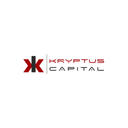
Stellar
- #Smart Contract Platform
- #Cryptocurrency
- #Binance BUSD
- 0.11518
- $94.03M
- $3.33BRank #34
- 28.92B
- Spot Markets
- Overview
- Market Data
Similar News
More Info- 04-22 22:54
Rune DOG•GO•TO•THE•MOON futures price is $0.005
- 04-21 11:41
Pre-Rune concept NFT Rune Doors floor price is now reported at 0.0264 BTC, which is...
- 04-20 09:04
CyberKongz launches rune number 2 "DECENTRALIZED", and the price of Pre-Rune NFT doubles
- 04-17 19:28
Omni airdrop is available, the current price on the chain is 45.04 USD
- 04-13 18:14
The floor price of 7007 Genesis Pass is currently 0.1 ETH, up more than 100%...
Market Signal
More InfoCryptocurrency Calendar
03-20 00:00Stellar | Coins.ph ListingExchange
What Is Stellar (XLM)?
Stellar (XLM) is a peer-to-peer ([P2P]) decentralized network created in 2014 by The Stellar Development Foundation or Stellar.org. The network officially launched in 2015 with the purpose of connecting the world's financial systems and ensuring a protocol for payment providers and financial institutions. The platform is designed to move financial resources swiftly and reliably at minimal cost. Stellar links people, banks, payment processors and allows users to create, send and trade multiple types of crypto.
The basis of the network is its native digital currency - XLM or Lumens. XLM acts as an intermediate currency for operations and is also used to pay transaction fees. How it works: the protocol converts money in a few seconds, first into XLM, and then into the requested currency.
The Stellar payment protocol is based on distributed ledger technology -- an open-source development, community-owned and distributed by community. The crypto asset of the Stellar platform helps with cross-border transactions, overcoming the problems of high fees and slow procedures. XLM is more focused on assisting individuals transfer money than they are with institutions. Thus, Stellar offers access to financial systems, and people can send money at low cost and promptly around the world.
Moreover, Stellar serves as a decentralized exchange and marketplace, with a built-in order book that tracks ownership of Stellar assets. Platform users can manage buy/sell orders, as well as select and set their preferred assets in settlements. XLM is a built-in coin that helps reduce transaction fees.
The network maintains a high level of security. XLM holders must have at least one token in order to remain active on the network. This nuance performs a global goal - the execution of network transactions efficiently and with minimal time costs. Plus, Lumens offers protection against flood attacks by making microtransactions too expensive for hackers with no chance of profit, which keeps Stellar Network safe from serious threats.
The target audience of Stellar is the inhabitants of developing countries, ordinary users who are provided access to the global economy through fast, simple and inexpensive transactions. Stellar Network makes extensive use of Lumens to produce live convection as well as to send cash in multiple currencies; currency is sent from one peer, and the recipient can receive the amount in another currency. This feature is beneficial when a transaction is made between currencies without widely traded pairs.
Support for multi-currency transactions is another competitive advantage of Stellar, and the ability for cross-currency transactions has only enhanced processes with foreign operations. Moreover, stable speed and low transaction costs are a privilege that users receive.
This functionality is powered by a development called Anchors (a bridge between different currencies and the network), which simplifies the exchange within the network and helps speed up the whole process.
In summary, the benefits of Stellar (XLM) include:
**Simplicity: **both in relation to the simplified currency exchange process and the ease of user access. Due to XLM, all transactions are seamlessly performed for both the sender and the recipient. And, in order to join Stellar Network, all retail users need is a stable internet connection and Lumen-enabled software;
**Decentralization:** The Stellar database is open-source. No one authority controls the movement of Lumens. Transactions are authorized by the community, the data is stored on the blockchain and anyone can check it;
**High speed of transfer and transaction confirmation** (facilitated by the Stellar [consensus] mechanism). The transaction time is about 3-5 seconds (confirmation is facilitated by the Stellar consensus mechanism), which is faster than bank transfers and cross-border payments. Stellar Blockchain is capable of supporting thousands of transactions per second that makes it possible to use [smart contracts] and multi-signatures;
**Low translation cost compared to alternative methods:** Stellar Blockchain has an annual inflation rate of 1%, which is a fixed amount.
Put simply, Stellar is an open network that allows money to be moved and stored. When it was released in July 2014, one of its goals was boosting financial inclusion by reaching the world’s unbanked — but soon afterwards, its priorities shifted to helping financial firms connect with one another through blockchain technology.
The network’s native token, lumens, serves as a bridge that makes it less expensive to trade assets across borders. All of this aims to challenge existing payment providers, who often charge high fees for a similar service.
If all of this sounds familiar, it is worth noting that Stellar was originally based on the Ripple Labs protocol. The blockchain was created as a result of hard fork, and the code was subsequently rewritten.
Who Are the Founders of Stellar?
Jed McCaleb founded Stellar with the lawyer Joyce Kim after leaving Ripple in 2013 over disagreements about the company’s future direction.
In explaining the rationale behind Stellar in September 2020,[ McCaleb told CoinMarketCap]: “The whole original design of Stellar is that you can have fiat currencies and other kinds of forms of value run in parallel with each other and with crypto assets. This is super important to drive this stuff mainstream.”
McCaleb’s goal is to ensure that Stellar can give people a way of moving their fiat into crypto — and eliminate the friction that people normally experience when they are sending money around the world.
He currently serves as the CTO of Stellar, as well as the co-founder of the Stellar Development Foundation. This not-for-profit organization aims to “unlock the world’s economic potential by making money more fluid, markets more open, and people more empowered.”
What Makes Stellar Unique?
Fees are a sticking point for many. However, high costs when making cross-border payments aren’t just exclusive to fiat-based payments solutions such as PayPal — transaction fees have also been known to go through the roof on the Bitcoin and Ethereum blockchains because of congestion.
Stellar is unique because every transaction costs just 0.00001 XLM. Given how one unit of this cryptocurrency only costs a few cents at the time of writing, this helps ensure that users keep more of their money.
Few blockchain projects have managed to secure partnerships with big-brand technology companies and fintech firms. A few years ago, Stellar and IBM teamed up to launch World Wire, a project that allowed large financial institutions to submit transactions to the Stellar network and transact using bridge assets such as stablecoins.
Although other blockchains have community funds, meaning that grants can be given to projects that help further the ecosystem, Stellar allows its users to vote on which ventures should be given this support.










